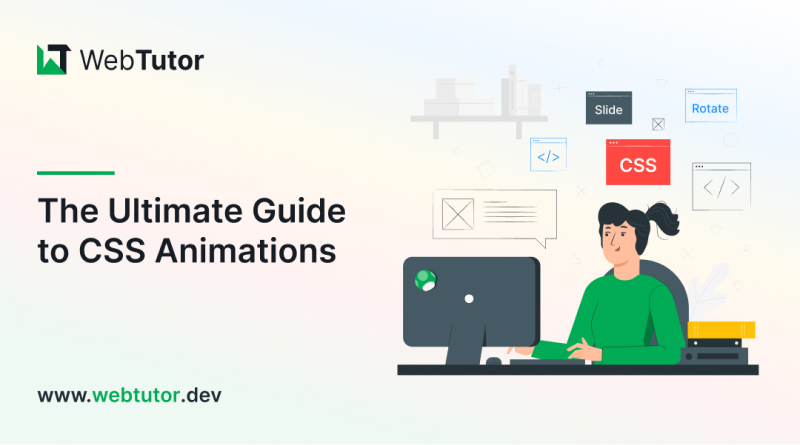The world of web design has seen a significant shift in recent years, with animations becoming a powerful tool to engage and delight visitors. Animations can enhance a site's loading experience, direct users' attention to essential elements, and improve overall usability. Although animations on the web are not new, the way they are created has evolved.
Historically, developers relied on JavaScript, which is considered one of the most challenging coding languages to learn, or Flash, an Adobe product requiring a monthly fee. However, over the past decade, many developers have moved away from JavaScript and Flash, opting to use CSS for animations. This approach has become increasingly popular due to its simplicity, cost-effectiveness, and the fact that most developers are already familiar with CSS.
This comprehensive guide will delve into the world of CSS animation, exploring various types, examples of live sites using animations, and essential techniques for creating captivating animations.
What is CSS Animation?
CSS animation is a technique used to create dynamic changes to the appearance and behavior of web page elements. By defining multiple CSS style configurations, such as colors, opacity levels, border radiuses, and more, you can create smooth transitions between these styles for a single element on your page.
There are numerous animatable CSS properties to choose from, allowing you to create diverse and engaging animations for your website.
Whether it's a progress bar displaying loading speed, a color-changing button when hovered over, or a logo bouncing into view from the side of the screen, CSS animations can make your web design more cohesive and memorable.
Let's dive deeper into some specific types of CSS animations and explore their use cases.
Types of CSS Animation
CSS animations allow you to create a wide range of effects, including shifting, rotating, skewing, scaling, spinning, and stretching elements on a page. They can also interact with each other in various interesting ways.
While there are thousands of CSS animations available, we will focus on some of the most common and impressive examples you will see across the web.
1. CSS Text Animation
Animated typography is a powerful technique to immediately capture your audience's attention. With CSS, you can animate text on your site in numerous ways, such as adding a rainbow effect, shadow, glitch effect, or even a gooey effect.
For instance, consider a typewriter animation where the visitor watches the text being written on the page:
2. CSS Color Animation
Color animations are often used to make backgrounds of web pages alternate between colors, as shown in the example below.
CSS color animations can also be applied to text, buttons, borders, and other elements on the page. This makes them ideal for drawing the visitor's eye to a specific point on the site.
3. Slide-in Animation
Slide-in animations allow you to make an element slide into view from the top, bottom, left, or right of the screen, grabbing the visitor's attention. You can also combine slide-in animations with other effects to further customize your design. In the example below, the slide-in animation is combined with a blurred text effect, so the company name slowly comes into focus.
4. CSS Rotate Animation
Using CSS, you can rotate an element in 2D or 3D space. This type of animation is often combined with other animations to create elements in motion. For example, consider the rocket below. It is not only translated from the bottom left of the screen to the top right over three seconds but also rotated 70 degrees in a clockwise direction during the first two seconds.
5. CSS Wave Animation
The CSS Wave animation is a unique use case of the rotate animation. To create a wave animation, you need to create multiple HTML objects representing your waves. Then, apply the rotate animation to each wave with different background colors and values for the animation-timing property. You can also experiment with opacity.
The effect will look something like the demo below.
6. CSS Glow Animation
CSS glow animations can contribute to the ambiance of your site. For example, to promote an event on your site, you might add neon glow text against a dark background to set a party mood. You can also use the glow effect on buttons, borders, loading animations, hover animations, and more.
In the example below, the gradient button glows when the user hovers over it, making it more appealing to click.
Read more: Create Stunning Websites With CSS
Advancing Your CSS Animation Skills: Transitions and Keyframes
While CSS transitions are excellent for simple animations, keyframe animations offer more control and flexibility. Keyframe animations enable you to specify intermediate steps of an animation and apply more complex timing functions.
CSS Transitions
CSS transitions provide a straightforward way to create smooth animations by automatically interpolating between the initial and final states of a CSS property. To create a transition, you'll need to define two things: the property you want to animate and the duration of the animation.
- Basic Transition Example
Consider a simple div element with a background color that changes on hover. To add a transition to this example, modify the .box selector as follows:
Now, when you hover over the div, the background color will smoothly transition from blue to red over 0.5 seconds.
- Transition Properties
The transition property is a shorthand that includes four properties:
- transition-property: The CSS property to be animated (e.g., background-color).
- transition-duration: The duration of the animation (e.g., 0.5s).
- transition-timing-function: The easing function that determines the speed curve of the transition (e.g., ease, linear, ease-in, ease-out, ease-in-out).
- transition-delay: The amount of time to wait before the transition begins (e.g., 1s).
Here's an example that uses all four properties:
Mastering Keyframe Animations
Keyframe animations provide more control and flexibility compared to transitions, allowing you to specify intermediate steps and more complex timing functions.
- Creating a Basic Keyframe Animation
Let's create a simple keyframe animation that changes the div element's background color over time. First, define the keyframes using the @keyframes rule:
Next, apply the animation to the div element:
The animation property is shorthand for these properties:
- animation-name: The name of the @keyframes rule (e.g., changeColor).
- animation-duration: The duration of one cycle of the animation (e.g., 3s).
- animation-timing-function: The easing function for the animation (e.g., ease, linear, ease-in, ease-out, ease-in-out, cubic-bezier).
- animation-delay: The amount of time to wait before the animation begins (e.g., 1s).
- animation-iteration-count: The number of times the animation should repeat (e.g., infinite).
- animation-direction: The direction in which the animation should be played (e.g., normal, reverse, alternate, alternate-reverse).
- animation-fill-mode: Specifies how the animation affects the element before and after it plays (e.g., none, forwards, backwards, both).
- animation-play-state: Specifies whether the animation is running or paused (e.g., running, paused).
Here's an example that uses all the animation properties:
- Chaining Animations
You can chain multiple animations by separating them with a comma. For example, let's say we want to animate both the background color and the size of the div:
Now, the div element will grow in size and change its background color simultaneously.
Frequently Asked Questions
Q: What's the difference between CSS transitions and keyframe animations?
A: Transitions are simpler and work well for basic animations that involve changing one CSS property from one value to another. Keyframe animations offer more control and flexibility, allowing you to specify intermediate steps and more complex timing functions.
Q: How can I pause or resume a CSS animation?
A: You can control the animation's play state using the animation-play-state property. Set it to paused to pause the animation, and running to resume it.
Q: How can I create a smooth, infinite loop with keyframe animations?
A: To create a smooth loop, ensure the initial and final keyframes have the same values. Also, set the animation-iteration-count property to infinite.
Q: Can I animate multiple properties at once with keyframes?
A: Yes, you can animate multiple properties within the same @keyframes rule. Just include all the properties you want to animate at each keyframe.
Q: Is it possible to control the speed and easing of transitions and animations?
A: Yes, both transitions and animations have a timing-function property (transition-timing-function and animation-timing-function, respectively) that allows you to control the speed curve of the animation. You can use predefined easing functions or create custom ones with cubic-bezier.
Conclusion
CSS animations are a powerful tool for engaging and delighting visitors on your site. With a wide range of animation types and techniques, you can create captivating and memorable web designs. As you explore the world of CSS animation, remember to strike a balance between creating an engaging experience and maintaining usability.
By incorporating animations in a thoughtful manner, you can elevate your web design and create a lasting impression on your audience.

